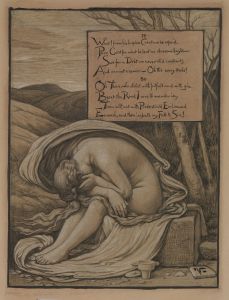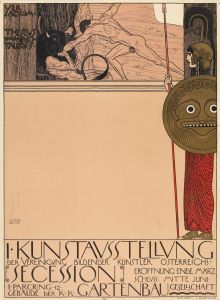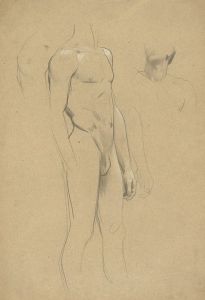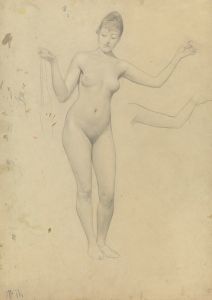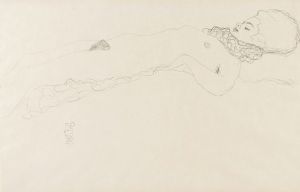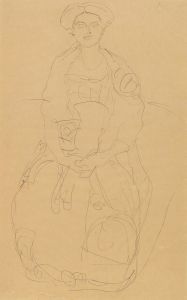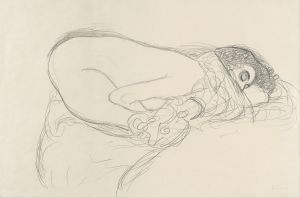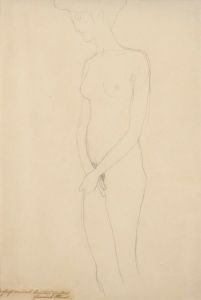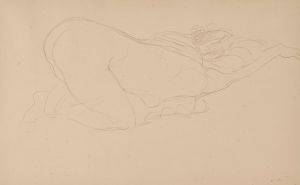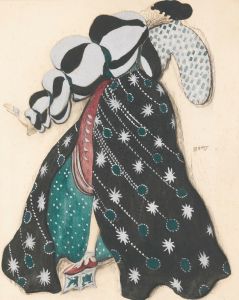
Draft for the painting ‘Judith I’
A hand-painted replica of Gustav Klimt’s masterpiece Draft for the painting ‘Judith I’, meticulously crafted by professional artists to capture the true essence of the original. Each piece is created with museum-quality canvas and rare mineral pigments, carefully painted by experienced artists with delicate brushstrokes and rich, layered colors to perfectly recreate the texture of the original artwork. Unlike machine-printed reproductions, this hand-painted version brings the painting to life, infused with the artist’s emotions and skill in every stroke. Whether for personal collection or home decoration, it instantly elevates the artistic atmosphere of any space.
"Judith I" is a renowned painting by the Austrian symbolist painter Gustav Klimt, created in 1901. This work is a striking example of Klimt's unique style, which combines elements of symbolism, eroticism, and the decorative arts. The painting is part of a series of works by Klimt that explore the biblical story of Judith, a Jewish heroine who saved her people by seducing and beheading the Assyrian general Holofernes.
The painting depicts Judith holding the severed head of Holofernes, a subject that has been a popular theme in art history, symbolizing the triumph of virtue over vice or the power of women. In "Judith I," Klimt presents Judith as a sensual and powerful figure, which was a departure from traditional representations that often emphasized her piety and heroism. Klimt's Judith is adorned with luxurious jewelry and clothing, emphasizing her allure and the seductive aspect of her character.
Klimt's use of gold leaf in "Judith I" is one of the painting's most distinctive features, reflecting his interest in Byzantine mosaics and the decorative arts. The gold background and intricate patterns create a sense of opulence and timelessness, drawing the viewer's attention to Judith's enigmatic expression and the dramatic tension of the scene. This use of gold became a hallmark of Klimt's work during his "Golden Phase," a period in which he produced some of his most famous paintings.
The composition of "Judith I" is notable for its focus on the upper half of Judith's body, with her face and the head of Holofernes occupying the central position. Judith's expression is both seductive and detached, suggesting a complex interplay of emotions. Her half-closed eyes and slightly parted lips convey a sense of mystery and allure, while the presence of Holofernes' head serves as a stark reminder of the violent act she has committed.
"Judith I" was first exhibited in 1901 and was met with both admiration and controversy. Some viewers were captivated by its beauty and the innovative use of materials, while others were unsettled by its erotic undertones and the portrayal of Judith as a femme fatale. Despite the mixed reactions, the painting solidified Klimt's reputation as a leading figure in the Vienna Secession, an art movement that sought to break away from traditional academic art and embrace new forms of expression.
Today, "Judith I" is housed in the Österreichische Galerie Belvedere in Vienna, Austria, where it continues to be celebrated as one of Klimt's masterpieces. The painting remains a powerful example of Klimt's ability to blend symbolism, sensuality, and decorative elements to create works that challenge conventional narratives and evoke a wide range of interpretations. Through "Judith I," Klimt not only reimagined a classic biblical story but also contributed to the broader dialogue about the role of women in art and society.





